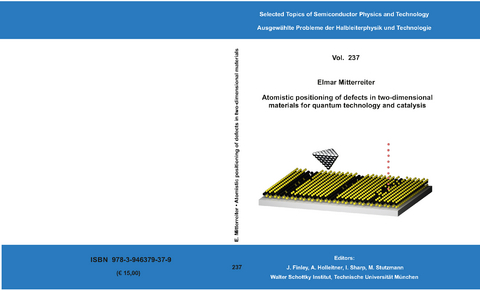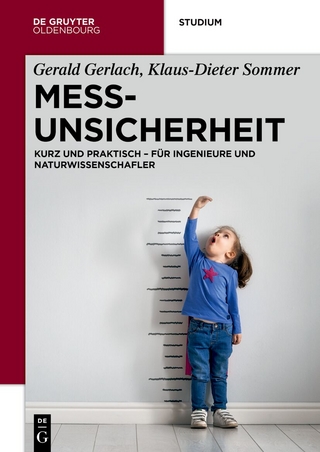
Atomistic positioning of defects in two-dimensional materials for quantum technology and catalysis
Seiten
2020
Verein zur Förderung des Walter Schottky Instituts der Technischen Universität München (Verlag)
978-3-946379-37-9 (ISBN)
Verein zur Förderung des Walter Schottky Instituts der Technischen Universität München (Verlag)
978-3-946379-37-9 (ISBN)
- Keine Verlagsinformationen verfügbar
- Artikel merken
Nanostructuring at the atomic scale has enabled enormous technological progress over the past decades. Suitable high-resolution instruments and material systems are required for precise structuring. Two-dimensional (2D) materials, such as MoS2, are perfect for high-resolution manipulation due to their reduced dimensions.
In this doctoral thesis, we use a helium ion microscope (HIM) to place individual point defects in MoS2 and examine their physical properties for future applications in quantum technology and catalysis.
In the first step, we study the interaction of the helium ions with the samples. After writing different defect patterns in MoS2 monolayers, we examine the resolution of the structures with low-temperature scanning tunneling microscopy. We find that we can place individual point defects with a precision of 9 nm. The backscattering of the He ions mainly limits this resolution through the substrate. We identify the most frequently generated defects as sulfur vacancies. In total, however, we find ten different types of defects, most of which still need to be examined in more detail. Scanning probe microscopy provides us with insights into the defects’ electronic structure and the lattice positions involved. Overall, we can use the HIM to place individual defects in MoS2 with very high precision and speed.
Afterward, we devote ourselves to the area of application of quantum technology. As our research group has recently shown, He-ion induced defects can form single-photon sources. The large number of defects generated by HIM have left open the question, which of these defects causes the observed luminescence. To determine the responsible defects, we combine well-controlled heating experiments with photoluminescence (PL), scanning probe microscopy, and DFT calculations. This enables us to assign various characteristic luminescence contributions and identify sulfur vacancies as the cause of the quantum emission.
As a second application, we consider the catalytic activity of MoS2. For this purpose, we develop an experimental set-up that allows the investigation of the catalytic activity of individual MoS2 flakes. We show that sulfur vacancies are the dominant active sites in natural MoS2. We then use the HIM to generate further defects and demonstrate a significantly increased catalytic activity. This proves that the HIM-induced defects are also suitable for optimizing the activity of MoS2 catalysts for sustainable hydrogen evolution.
The present work shows that helium ion microscopy on MoS2 combines incomparable precision, speed, and scalability in the generation of individual defects. The latter have highly relevant properties for quantum technology and a sustainable and clean energy supply.
In this doctoral thesis, we use a helium ion microscope (HIM) to place individual point defects in MoS2 and examine their physical properties for future applications in quantum technology and catalysis.
In the first step, we study the interaction of the helium ions with the samples. After writing different defect patterns in MoS2 monolayers, we examine the resolution of the structures with low-temperature scanning tunneling microscopy. We find that we can place individual point defects with a precision of 9 nm. The backscattering of the He ions mainly limits this resolution through the substrate. We identify the most frequently generated defects as sulfur vacancies. In total, however, we find ten different types of defects, most of which still need to be examined in more detail. Scanning probe microscopy provides us with insights into the defects’ electronic structure and the lattice positions involved. Overall, we can use the HIM to place individual defects in MoS2 with very high precision and speed.
Afterward, we devote ourselves to the area of application of quantum technology. As our research group has recently shown, He-ion induced defects can form single-photon sources. The large number of defects generated by HIM have left open the question, which of these defects causes the observed luminescence. To determine the responsible defects, we combine well-controlled heating experiments with photoluminescence (PL), scanning probe microscopy, and DFT calculations. This enables us to assign various characteristic luminescence contributions and identify sulfur vacancies as the cause of the quantum emission.
As a second application, we consider the catalytic activity of MoS2. For this purpose, we develop an experimental set-up that allows the investigation of the catalytic activity of individual MoS2 flakes. We show that sulfur vacancies are the dominant active sites in natural MoS2. We then use the HIM to generate further defects and demonstrate a significantly increased catalytic activity. This proves that the HIM-induced defects are also suitable for optimizing the activity of MoS2 catalysts for sustainable hydrogen evolution.
The present work shows that helium ion microscopy on MoS2 combines incomparable precision, speed, and scalability in the generation of individual defects. The latter have highly relevant properties for quantum technology and a sustainable and clean energy supply.
| Erscheinungsdatum | 30.12.2020 |
|---|---|
| Sprache | englisch |
| Maße | 150 x 210 mm |
| Themenwelt | Naturwissenschaften ► Physik / Astronomie |
| Schlagworte | 2D Materials • Helium Ion Microscopy • nanotechnology |
| ISBN-10 | 3-946379-37-0 / 3946379370 |
| ISBN-13 | 978-3-946379-37-9 / 9783946379379 |
| Zustand | Neuware |
| Haben Sie eine Frage zum Produkt? |
Mehr entdecken
aus dem Bereich
aus dem Bereich
von den Werkzeugen über Methoden zum TQM
Buch | Softcover (2024)
Springer Fachmedien (Verlag)
32,99 €
kurz und praktisch - für Ingenieure und Naturwissenschafler
Buch | Softcover (2024)
De Gruyter Oldenbourg (Verlag)
44,95 €


